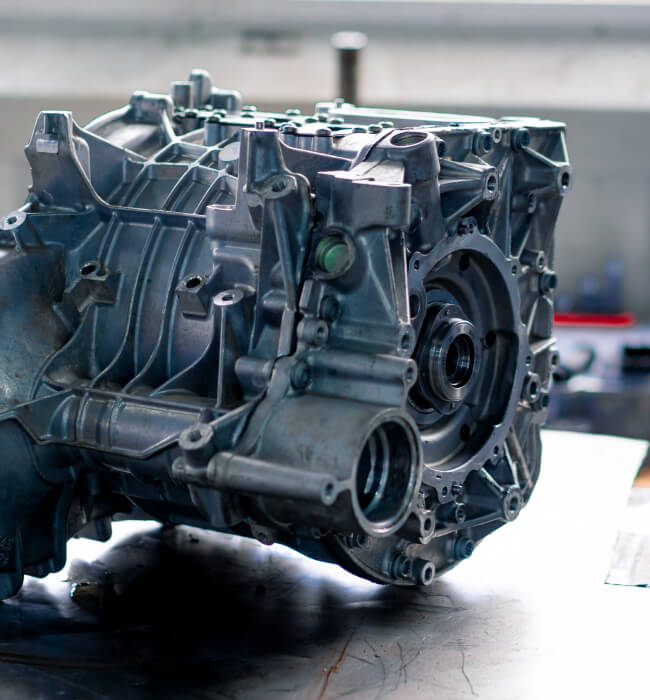Maintenance and Repair Manual Transmissions
Transmission Services are needed wherever rotational speed and torque needs to be adapted as a transmission comes into picture. This can be on pedal bicycles as well as on fixed machines, Transmission Services play an important role in both.
Multiple gear ratios or simply gears as are commonly called are present in a transmission. It offers the function of switching between the gears as the speed varies.
Multiple-gear transmissions are provided in a bicycle. Moreover, switching of the gears is manual in a bicycle. Many revolutions are attained with much less exertion from the cyclist. This can be achieved by using chains and chain wheels that are smaller in size than the tyres.


The proper arrangement of cogs, five or six gears and a reverse gear are useful in such a situation. The idle gear can also be brought to use by the driver when the car is not moving, although the engine is operating.
The drive train includes clutch, gearbox, differential and final drive shafts along with a prop shaft for rear-wheel drive. We need clutch in case of a car because the engine spins all the time. However, the wheels of the car do not spin. Because of this the wheels disconnect from the engine to stop a car without it (the engine).
By controlling the slippage between them, the clutch allows to smoothly engage a spinning engine to a non-spinning transmission. The rotation transmits with the help of a clutch. It is the clutch which can be engaged and disengaged.
Automatic transmissions are great but they are subject to wear and tear like any part of your vehicle. Some common symptoms that could indicate a problem are as below:
Hesitation
It is a delay between when we select a gear, and when the vehicle starts to move. Low fluid levels or a defective pressure pump causes hesitation either by slipping clutch packs or by insufficient fluid pressure.
Failure to select any gear
Electrical issues in the electronic control system of the transmission causes this. The low fluid levels, by sticking or defective shift solenoids can also cause this.
Harsh gearshifts
The failure of the control system to modulate the torque converter causes harsh gearshifts. The lock up clutch slips somewhat because of it’s design. This happens when performing gearshifts under aggressive driving conditions.
Engine stalls at low speeds
The failure of the torque converter clutch to disengage at low speeds causes this. This locks the engine and transmission together permanently if this happens, preventing the differential rotation of the engine and transmission and hence causing the engine to stall.
Transmission overheats
When the transmission fluid level is too high or too low transmissions over heats can happen. It can also happen when the towing load is more than the rated capacity of the transmission.
“CVT” stands for “Continuously Variable Transmission”. It is a type of automatic transmission but very different from traditional automatic transmissions. It provides a smoother driving experience and optimise the shifting process.
The transition between gears becomes near seamless when driving the CVT. They can permit the engine to operate at optimum power regardless of how fast the vehicle is travelling. It can hence provide better fuel economy and more efficient power usage. This is all because CVT is “continuously variable”. This means that instead of actual gear “stages”, the CVT allows for a continuous variation within the engine. This is the reason that the transition between gears is hardly noticed.
There are different types Of CVT transmissions which are:

Twin-clutch transmissions also known as DSG transmissions offers the best of automatic and manual transmissions. They are getting popular day by day and are available in a many passenger and sports vehicles.
To transmit the torque further along the vehicle’s drive-line a direct-shift gearbox (DSG) or dual-clutch transmission (DCT) utilizes two separate clutches in place of a singular item. Essentially placing two clutches and two gearboxes in one car.
Dual-clutch transmission is not a new concept but it actually dates back to the early 1900s. But it was only in 1980’s when significant advancements were made in electronic management. This allowed to produce working examples and many racing applications.
The first clutch is responsible for controlling gears one, three and five while the second clutch looks after gears two, four and six as well as reverse. This mechanism provides the efficiency of a manual transmission with smooth shifting similar to an automatic transmission. The Transmission Control Module (TCM) is responsible to determine which gear to select.
Because the power-train never gets disconnected from the transmission the DSG transmissions are quicker to shift when compared to the manual or automatic transmissions. Drivers experience improved acceleration as this process allows faster gear changes.
The DSG transmissions offers better fuel economy. This is because they do not employ a torque converter in comparison to the most traditional automatic or manual transmissions.

CVTs are a general improvement on the traditional automatic transmission. They generally feel smoother than other transmissions. Drivers often get confused because the sounds of regulation are often similar to that of a slipping or clunking transmission. Sometimes the new drivers of CVT vehicles needs reassurance that their transmission doesn’t need repair at all. Though, we always conduct our Multi-Check Inspection to ensure.
In the near future, we expect to see more and more CVTs. The CVTs will do good because of its great benefits. And we are prepared for all the increasing CVT transmission repairs with which we will be tasked.
The first and the most significant aspect of modern semi-automatic transmissions is that they are not actually “automatic” transmission. They are just manual transmissions without the clutch pedal.
The way fully automatic transmissions operate is entirely different from how a semi-automatic transmissions works. The hardware of a semi-automatic transmissions is exactly the same as of a manual transmission. The hardware is usually the entire gearbox.
The one main difference between a semi-automatic transmission and a manual transmission is that the semi-automatic transmission have actuators and computers doing all the hard work instead of cables and pipes running from the transmission to the driver so that the gear changes can take effect.
Semi-automatic retains the advantages of a manual transmission . The advantages of a manual transmission are low cost and better fuel efficiency. It provides the ease of use which one gets from a fully automatic vehicle which are more cost and more fuel consumption.


The transfer case takes power from the transmission and splits it between output shafts that connect to the front and rear drive shafts. All wheel drives work because of the transfer case.
Either gears or chain, drive them. The chain driven transfer cases are quieter and lighter. Hence, most of the transfer cases which are made today are driven by chains.
- Whether the four wheel drive on the vehicle is there or not the transfer case is always working. Every time you change the oil, check the transfer case fluid level as well.
- Transfer cases were filled with gear oil or automatic transmission fluid (ATF) in the olden days. But speciality lubricants are filled in modern transfer cases.
- As a difference in circumference can increase wear in the unit or at minimum a knock or harshness on lock hence it is important with permanent 4WD vehicles that all tyres are of the same brand, size and wear level.
- Selectable 4WD’s generally are not for general road use. The design is mainly for use on soft or slippery surfaces.

Turning corners in the vehicle would be difficult without the differential hence it is an essential part of the car. It gives the capability to the wheels of the car or truck to turn at different rates. The car needs a differential because during turning the inside wheel travels a shorter distance than the outside wheel.
The differential is in the front, in the front wheel drive vehicles. Another name for differential is trans-axle. The differential is in the back in rear-wheel drive vehicles. Differentials are present both in the front and in the back in four wheel drive vehicles. Hence, all vehicles have differentials of some kind.
The differential contains a fluid. This fluid acts as a lubricant and cools the gears. The fluid breaks down over time as is true with any other lubricant. The differential is very particular about the engine, its oil and it’s condition.

Oil changes at the recommended intervals are suggested for servicing. The differential fluid breaks quickly if you drive hard. The harder you drive the quickly it breaks down. It can break down if you:
The two common problems that can occur in differential are:
To book your next service or for more information on our Land Rover Services and Mechanics in Truganina, Victoria, you can contact us on +61 426-533-774. We at Western Prestige Auto are proud of ourselves as we fulfil our commitment to delivering world-class services in Truganina, Victoria.
Book An Appointment Now With Our Online Form
Whether a new model, an older model, or any condition, our well-trained car service experts always incorporate brand-approved parts and advanced diagnostic technology. We guarantee affordable and customised car service.

Words Of Appreciation From Our Satisfied Clients

Thimmaraja Bhovi

Darpan Patel

Matthew Higgins

Saandeep Chow

Rashpal Puarr

Domenic Muscari

Ankeet Modi

Himanshu Sharma

Dan Sova


























